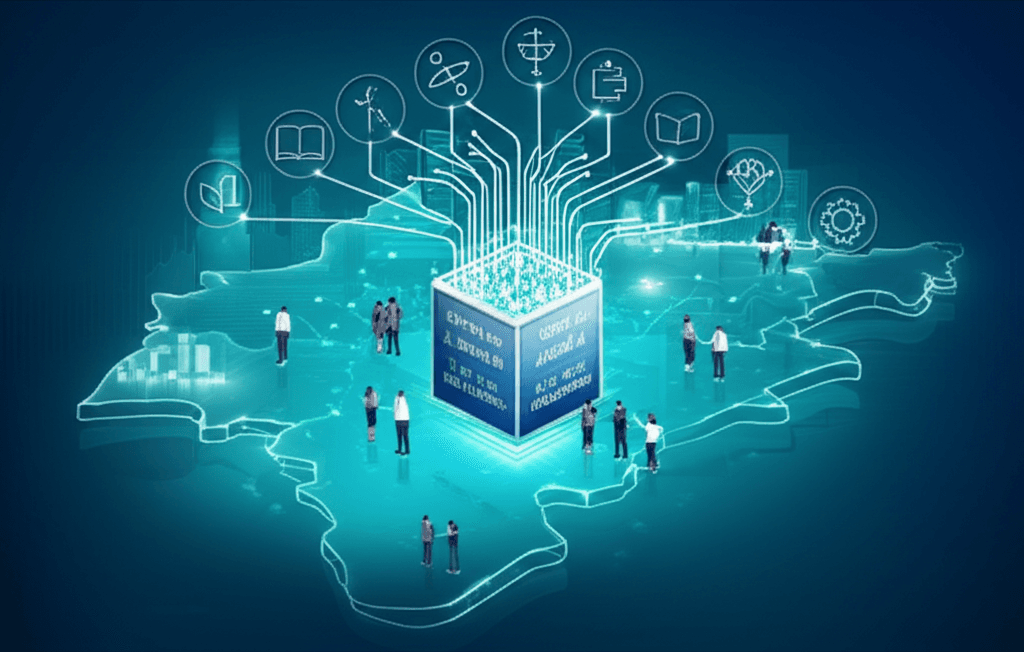Karnataka invests ₹50 crore in AI Centre, targets global tech leadership.
Karnataka's ₹50 crore AI center to spearhead applied research, attract investment, and expand tech jobs statewide.
June 9, 2025

The Karnataka state government is set to bolster its position as a premier technology hub with a strategic focus on artificial intelligence, earmarking ₹50 crore over the next five years for a new Centre for Applied AI for Tech Solutions (CATS). This initiative is a key component of the state's upcoming IT policy, anticipated to be finalized around July, which will succeed the current 2020-2025 policy. The new framework aims to foster innovation, attract significant investments, and generate substantial employment, particularly in emerging technologies like AI and cloud computing, while also emphasizing the expansion of the IT sector beyond Bengaluru into tier-2 and tier-3 cities.[1][2][3]
The proposed Centre for Applied AI for Tech Solutions is envisioned as a critical institution for driving cutting-edge advancements in artificial intelligence and facilitating its application across various sectors.[4][3] While specific operational details of CATS are still emerging, its establishment aligns with Karnataka's broader strategy to create a robust ecosystem for AI research, development, and deployment.[5][6][4] The ₹50 crore investment, to be disbursed over five years, underscores a commitment to long-term development in the AI domain.[1][7][4][2][3] This financial allocation is part of a larger push that includes a ₹300 crore Fund-of-Funds to support startups and a ₹100 crore corpus specifically for deep tech development, signaling a multi-pronged approach to nurturing the tech landscape.[1][6][8] The new IT policy itself is being designed as a "light-house policy" that will guide other related sectoral policies, including those for cybersecurity, engineering R&D, Global Capability Centres (GCCs), and data centres.[1] Consultations with industry bodies like Nasscom have been integral to shaping this policy, focusing on reskilling the digital workforce, extending IT infrastructure, and implementing regulatory reforms to improve the ease of doing business.[1]
Karnataka's focus on AI is not entirely new but is receiving a significant boost through these budgetary allocations and policy revisions. The state has already been recognized for its efforts in AI, with Bengaluru often dubbed the AI capital of India.[5] Previous initiatives include collaborations with the World Economic Forum to establish a dedicated AI centre aimed at positioning Karnataka as a global AI hub and the establishment of an AI and ML center focused on advisory, solution development, and upskilling within government services.[5][9] The government has also been leveraging AI to improve public service delivery, utilizing its vast data resources in areas like identifying beneficiaries for scholarships and pension schemes.[5] The new Centre for Applied AI is expected to build on these foundations, potentially fostering greater collaboration between industry, academia, and government.[10][9] The emphasis on "applied" AI suggests a focus on translating research into practical solutions for real-world problems, which could span across diverse industries such as agriculture, healthcare, transportation, education, and e-governance.[5][6]
The implications of this focused investment in AI are substantial for the industry. The establishment of CATS, coupled with the broader IT policy and funding mechanisms, is likely to attract further investment into Karnataka's AI sector, both from domestic and international players.[6][11] It is anticipated to stimulate innovation, leading to the development of new AI-driven products and services. This, in turn, could create a significant number of high-skilled jobs, not only in AI development and research but also in allied sectors that adopt AI technologies.[6][2] The government's explicit goal of expanding the IT ecosystem beyond Bengaluru to cities like Mysuru, Mangaluru, Hubballi-Dharwad, and Kalaburagi aims to distribute these opportunities more broadly across the state.[1][7][6][2] This decentralization effort is part of the 'Beyond Bengaluru' initiative, which seeks to create 10,000 new startups in smaller towns and cities.[2] The broader Local Economy Accelerator Programme (LEAP), with a ₹1,000 crore grant, aims to support this decentralization and generate five lakh employment opportunities across the state.[12][7][2][3] Furthermore, the state's initiatives like the Global Capability Center (GCC) Policy 2024-2029, which also heavily emphasizes AI and aims to attract 500 new GCCs and create 3.5 lakh jobs by 2029, will likely synergize with the new AI centre.[13][14][15][16]
In conclusion, Karnataka's proposal for a ₹50 crore budget for the Centre of Applied AI for Tech Solutions within its new IT policy framework marks a significant step in its ambition to lead India's AI revolution.[7][4][3] This initiative, supported by substantial funding for startups and deep tech, is poised to accelerate AI research, development, and adoption across the state.[1][6] By focusing on applied AI, fostering a skilled workforce, and promoting the growth of the IT sector beyond its traditional strongholds, Karnataka aims to not only solidify its position as a national technology leader but also to become a prominent player on the global AI stage.[5][17][18] The success of this endeavor will depend on effective implementation, sustained investment, and robust collaboration between the government, industry, and academic institutions, but the vision laid out points towards a future where AI plays an increasingly integral role in Karnataka's economy and societal development.[11][19][20]
Sources
[2]
[10]
[11]
[12]
[13]
[14]
[15]
[16]
[17]
[18]
[19]
[20]